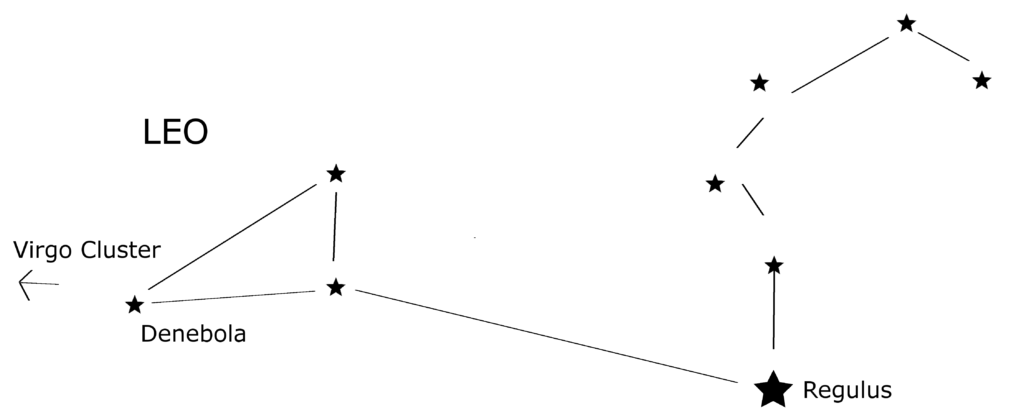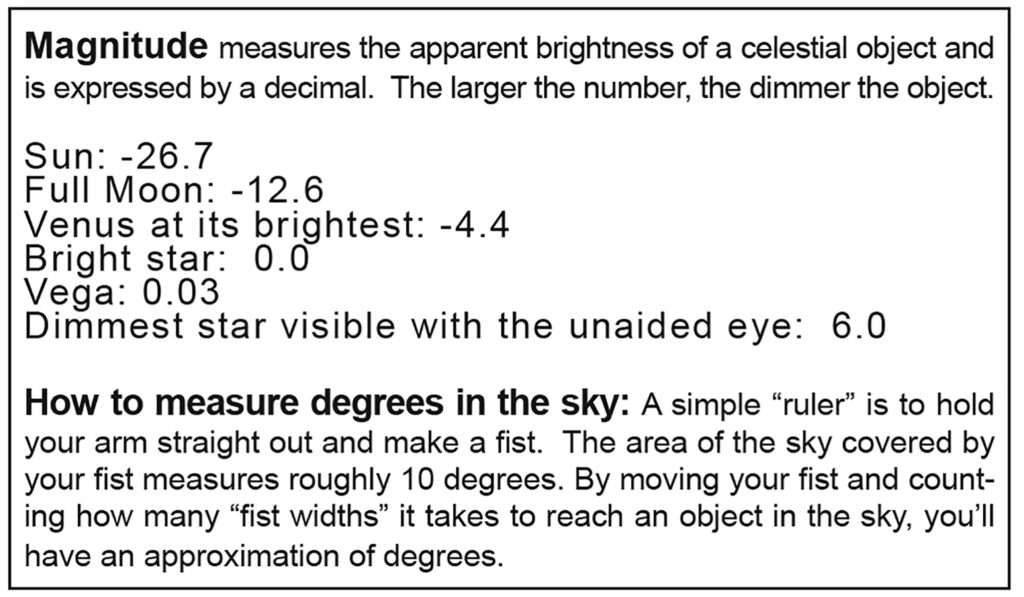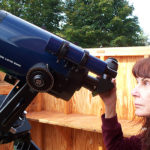Night Sky: Eta Aquariid meteor shower peaks on May 6
by Dee Sharples –
 On May nights after 10:00 pm, look toward the south. There’s an area of sky just east of the star Denebola in the constellation Leo the Lion where you’ll see a patch of black, apparently empty space. But within this space is something amazing! Here you’ll find the Virgo Cluster, approximately 1,500 galaxies contained in a small area of sky.
On May nights after 10:00 pm, look toward the south. There’s an area of sky just east of the star Denebola in the constellation Leo the Lion where you’ll see a patch of black, apparently empty space. But within this space is something amazing! Here you’ll find the Virgo Cluster, approximately 1,500 galaxies contained in a small area of sky.
The Virgo Cluster is the closest large cluster of galaxies to our own galaxy the Milky Way in which our solar system resides. Approximately 15 million light years in diameter, most of the members of the Virgo Cluster are dwarf galaxies but the most prominent ones are elliptical and spiral shaped. Our Milky Way galaxy, the nearby Andromeda galaxy, and over 30 other galaxies are considered to be part of what’s known as the Local Group. The Virgo Cluster is only slightly larger than the Local Group but it contains 50 times the number of galaxies. The Virgo Cluster, the Local Group, plus many other smaller clusters of galaxies are all part of the Virgo Supercluster, a concentrated mass of galaxies.
You’ll need a telescope to see the faint galaxies in the Virgo Cluster which is sixty-five million light years away from us. Some of the brighter galaxies can be seen in a small telescope but a 6-inch telescope will reveal many more. A few years ago on a rare superbly clear night, I turned my 8-inch Schmidt-Cassegrain telescope toward the Virgo Cluster and was amazed at how many faint galaxies popped into view, something I had never seen before!
The month of May hosts the Eta Aquariid meteor shower. Although sporadic meteors from this shower can be spotted anytime from late April through May 28, it peaks around 4:00 am on May 6. A last quarter Moon will brighten the sky reducing the number of meteors visible to about only 10 per hour.
The Eta Aquariid shower originates from the dust particles left behind by Comet 1P/Halley as it passed through our solar system every 75 years over the past several thousand years. As the Earth travels through this trail of debris, the particles enter our atmosphere and burn up creating what some people call “shooting stars”. For the best chance of seeing these meteors at the peak, find a dark observing site away from lights and stand where a tree or building blocks out the direct light of the Moon. A meteor can appear anywhere in the sky, but if you trace back its path to where you first saw it, it will be from the direction of the low eastern sky where the constellation Aquarius will be rising.
If you’re outside on any early morning in May, look for several planets which will be in the sky. Mars at Magnitude (Mag) -0.7 and dimmer Saturn at Mag 0.3 will be in the  south, with much brighter Jupiter at Mag -2.5 in the southwest getting ready to set. Mercury at Mag 0.3 will be more difficult to spot as it rises in the brightening eastern sky about an hour before the Sun.
south, with much brighter Jupiter at Mag -2.5 in the southwest getting ready to set. Mercury at Mag 0.3 will be more difficult to spot as it rises in the brightening eastern sky about an hour before the Sun.
In the evening sky, it will be much easier to spot a couple bright planets. Brilliant Venus will be in the west shining at Mag -3.9. On May 17 one hour after sunset, a slim crescent Moon joins Venus about 6 degrees to the planet’s left.
The giant planet Jupiter rises in the east as the sky darkens. Shortly after 9:00 PM it will have risen to the same distance above the horizon as Venus which will be on the opposite side of the sky. Jupiter is at opposition on May 8 and will remain visible all night. Opposition occurs when a planet is on the exact opposite side of the Earth than the Sun.
Lots to see in both the morning and night sky this month.

Dee Sharples is an amateur astronomer who enjoys observing planets, star clusters and the Moon through her telescope. She is a member of ASRAS (Astronomy Section of the Rochester Academy of Science) and records “Dee’s Sky This Month”, describing what can be seen in the sky, on the ASRAS website at rochesterastronomy.org. Watch for her monthly Owl Light News feature to learn more about the night sky.